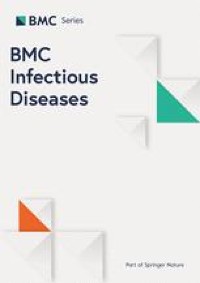Infection
Skin lesions by Scedosporium apiospermum and Nocardia pulmonary infection in an oncologic patient: a case report
Oncological patients are at a heightened risk of developing opportunistic infections, with approximately 80% of Nocardia infections occurring in immunocompromised individuals [2]. A review of 136 episodes of Nocardia infection at a cancer center revealed that 43.4% were associated with solid tumors, similar to our patient’s case, while the remainder were linked to haematological diseases [8]. Clinical differences exist between infections in immunocompromised and immunocompetent patients. Immunocompromised individuals are more likely to experience cavitation lesions in the lungs, disseminated infection, and eye involvement. Furthermore, mortality rates are significantly higher in this group, reaching 27% compared to 7% in immunocompetent patients [2].
Regarding identification, a multi-center study conducted in Spain found that the most commonly isolated species is N. cyriacigeorgica, as observed in our case [3]. Antimicrobial susceptibility varies among Nocardia species. In Spain, amikacin and linezolid exhibit activity against all species in a majority of cases (98.3% and 99.4% respectively), while carbapenems and clotrimazole are effective against most species (90.5% and 83.8% respectively) [9].
On the other hand, fungal infections are a growing entity globally. Emerging pathogens such as Scedosporium should not be ignored, as it was the second most frequently isolated filamentous fungus in a population-based survey in Spain [10]. Epidemiological studies in other countries also confirm this trend [11].
Scedosporium infection has been associated with corticosteroid use, chronic lung disease, diabetes and haematological malignancy and not usually with solid tumors [12,13,14,15] In the case of our patient, he had been receiving corticosteroid treatment while undergoing treatment for Nocardia pneumonia. Scedosporium has also been described in immunocompetent hosts after drowning in polluted wated or penetrating trauma [5, 6]. The most common forms of infection in immunocompetent hosts are keratitis, endophthalmitis, otitis, sinusitis, central nervous system infections, osteoarticular and soft tissue infections and pneumonia. In immunocompromised patients, infections can involve any organ with a predilection for skin (as in our case), sinuses, lungs and central nervous system [4, 5, 7, 16].
The histological study and the microbiological culture are the main tools to reach a diagnosis. At the moment, molecular techniques are reserved for studies [17]. Histopathologic examination is helpful in determining the presence of an invasive fungal infection (e.g. positivity in the specific fungal stains, septate hyphae…), but it is not possible to establish the causative pathogen without culture because many molds have a similar appearance. Culture is also important for antifungal susceptibility testing [4, 5]. In a Spanish study analysing 60 isolates of Scedosporium, most of the strains (with exception of S. prolificans) were found susceptible for voriconazole and micafungin [18].
The prognosis is poor due to the comorbidities of patients and the multi-resistance of the Scedosporium species, with high MICs (Minimum Inhibitory Concentration) to most of antifungals tested. S. apiospermum shows in vitro susceptibility to voriconazole, posaconazole and in some cases to echinocandins [10]. Also, species and site of infection were shown to be statistically significant prognostic factors for overall global response [12]. Surgical resection or debridement is key in immunosuppressed patients. Its indication in the ESCMID and ECMM guidelines are the following: haemoptysis from a single cavitary lung lesion, progressive cavitary lung lesion, osteomyelitis or septic arthritis, resection of infected or colonized tissue before commencing immunosuppressive agents to prevent dissemination and infiltration into the pericardium great vessels, bone or thoracic sort tissue [4].
Overall mortality is 30% for immunocompetent patients and 44% for immunocompromised hosts [12]. The most at-risk patients are hematopoietic stem cell transplant recipients and the ones suffering from disseminated disease. Patients receiving voriconazole have longer survival time compared to patients treated with amphotericin B [4, 7, 12]. In a retrospective study of 107 voriconazole treated patients, the median therapy duration in treatment success cases was 180 days. Best success rate was seen in skin/subcutaneous tissues [7].
In conclusion, emerging fungal infections are increasing globally. These species are more difficult to diagnose and treat due to their resistance, which implies a higher mortality [19]. Therefore, clinicians must be more aggressive in the diagnosis, ruling out complications and treatment (including surgery if necessary) [4, 7]. More studies are needed to provide more information on all these aspects.

